In June 2022, we embarked on a 10-day trip to Tanzania, starting with a 6-day safari across four national parks in the north-east of the country: Lake Manyara, the famous Serengeti, Ngorongoro, and Tarangire.
We chose to go on a safari with a small group (4 tourists) and with tent lodging, and we trusted Arunga Expeditions to organize our trip. We were not disappointed - it was an incredible adventure. Thomas, our guide, and Isaac, our cook, took great care to ensure that everything was perfect. While tent lodging may not be the most comfortable option, it does provide an incredible proximity to the animals. At night, we were surrounded by the noises of the hyenas and zebras, and some animals even wandered through the camp in search of food.
Day 5: Ngorongoro
Ngorongoro crater is an unique place in the world, it was formed 2 to 3 million years ago when a large volcano exploded and collapsed on itself. It is the world's largest inactive, intact and unfilled volcanic caldera. The crater floor is at an elevation of 1,800 meters above sea level and 610 meters below the top of the crater.
It was named "Ngorongoro" by the Masai after the sound produced by cowbell when climbing the slops of the crater "ngoro, ngoro".



We arrived at the Ngorongoro Conservation Area in the late afternoon and spent the night above the crater at an elevation of 2,300 meters. The temperature, even in June, is quite cold during the night, the fog keeping the atmosphere quite humid.
This was the only camp of our trip guarded by armed guards. The crater is monitored 24/7 against poachers, as the conservation area is home to around 20 black rhinoceroses. In the 1970s, there were more than 10,000 rhinos roaming the prairies of Tanzania, but now there are fewer than 200 of these majestic animals.
After dinner, Thomas instructed us to leave any food in the car and not to bring anything edible into the tent. Wild pigs are known to wander through camps at night in search of food. It has happened several times that, smelling food, they have torn open the fabric of the tent, and people woke-up with a 40kg pig on the belly searching for food.
The next day, we began our descent into the crater. The landscape was unique; we were driving in a 20 km diameter caldera surrounded by a 600m mountain, with clouds still stuck at the top of the crater, falling into the pit.
The conservation area is home to at least 30,000 wildlife animals, and we spent the morning admiring large herbivores. Wildebeest bulls were fighting to protect their territory, while zebras watched cautiously. Wildebeests (or gnus) and zebras often stay and migrate together because zebras have good eyesight while wildebeest have a good sense of smell and hearing. By teaming up, they have a higher chance of survival against their predators. Thanks to the mild weather, some hippos were out of their pools, grazing in the meadows. The "pièce de resistance" was spotting one rhino before we headed back.
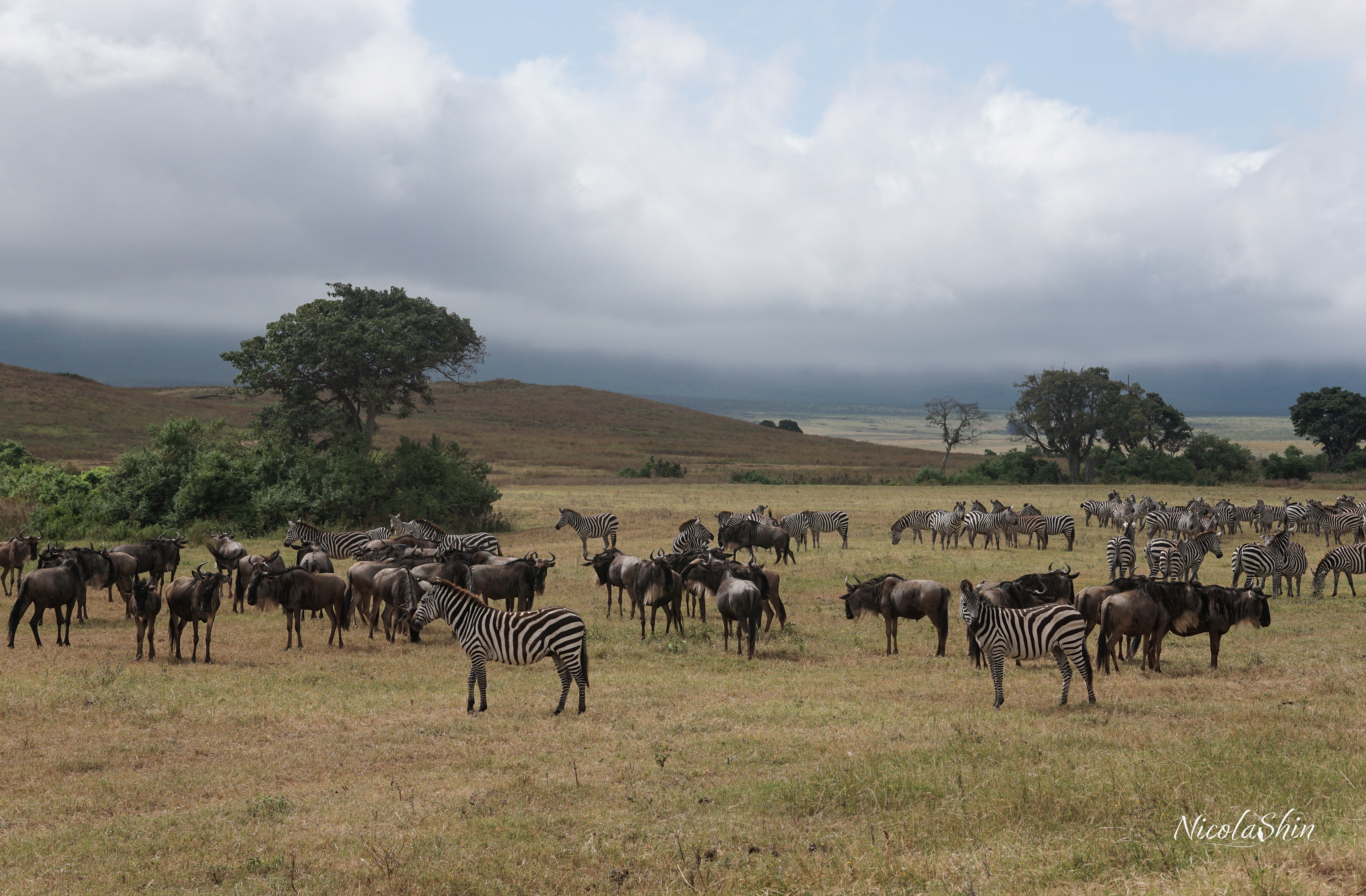
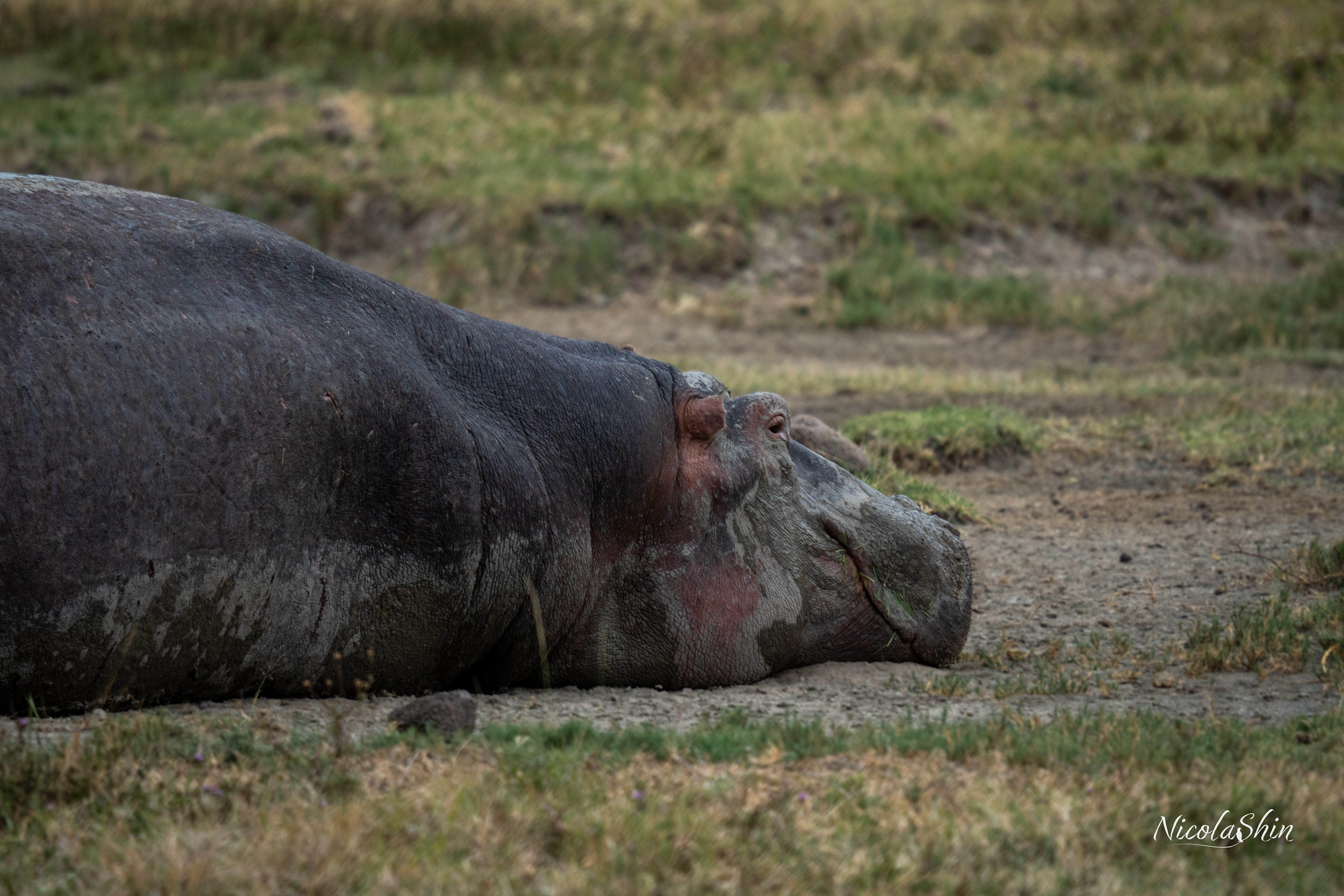
Dying Hippo

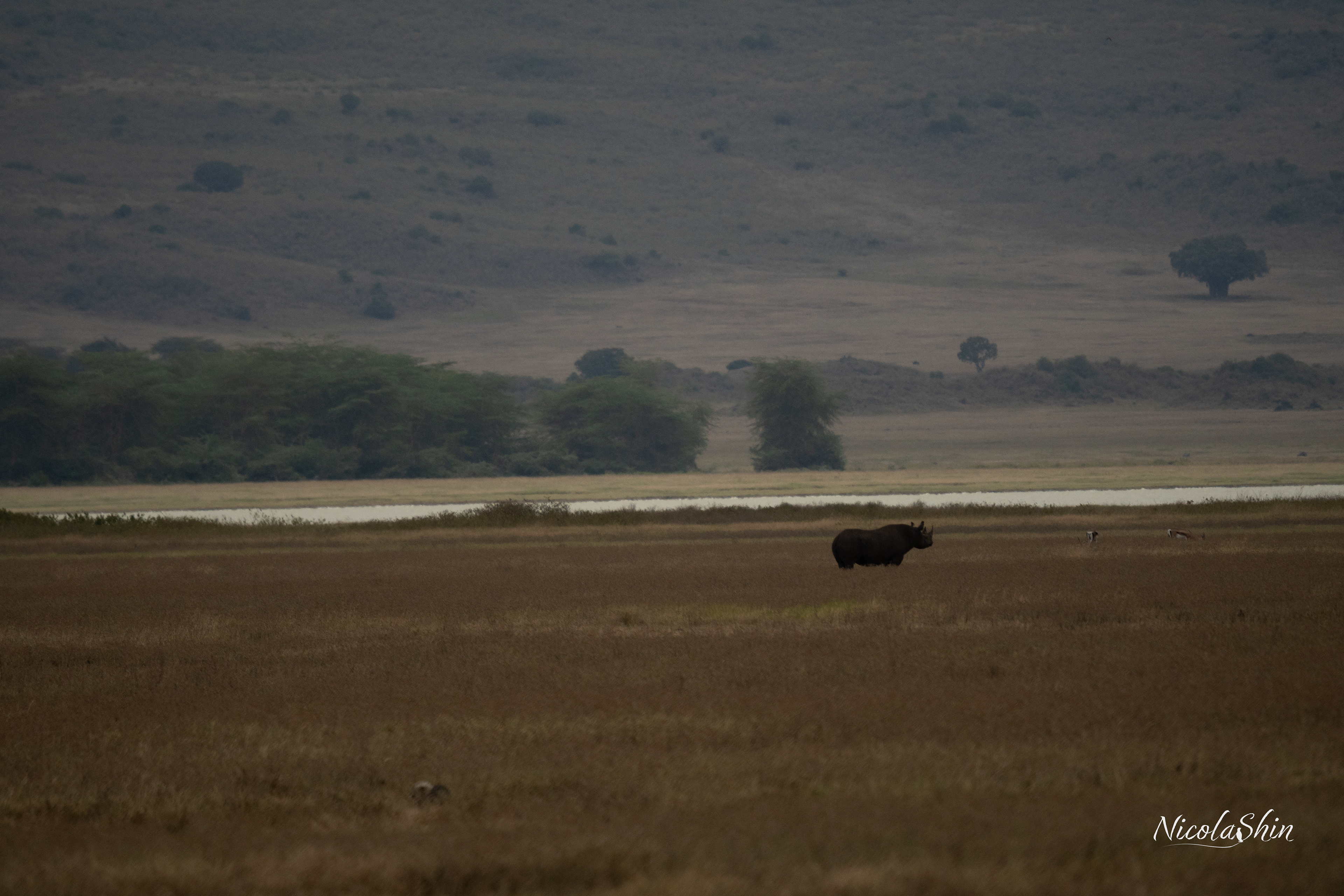
Black Rhino

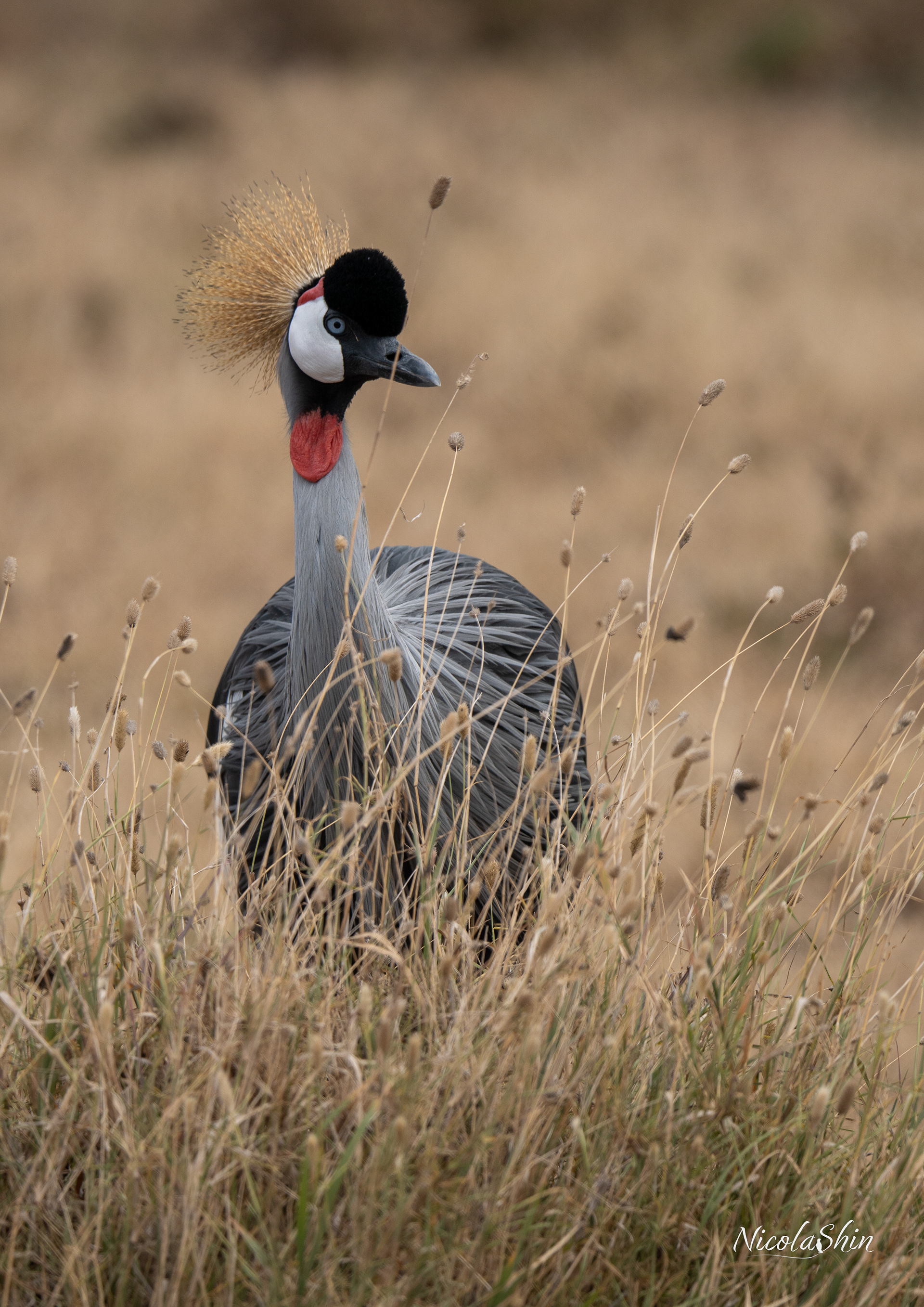
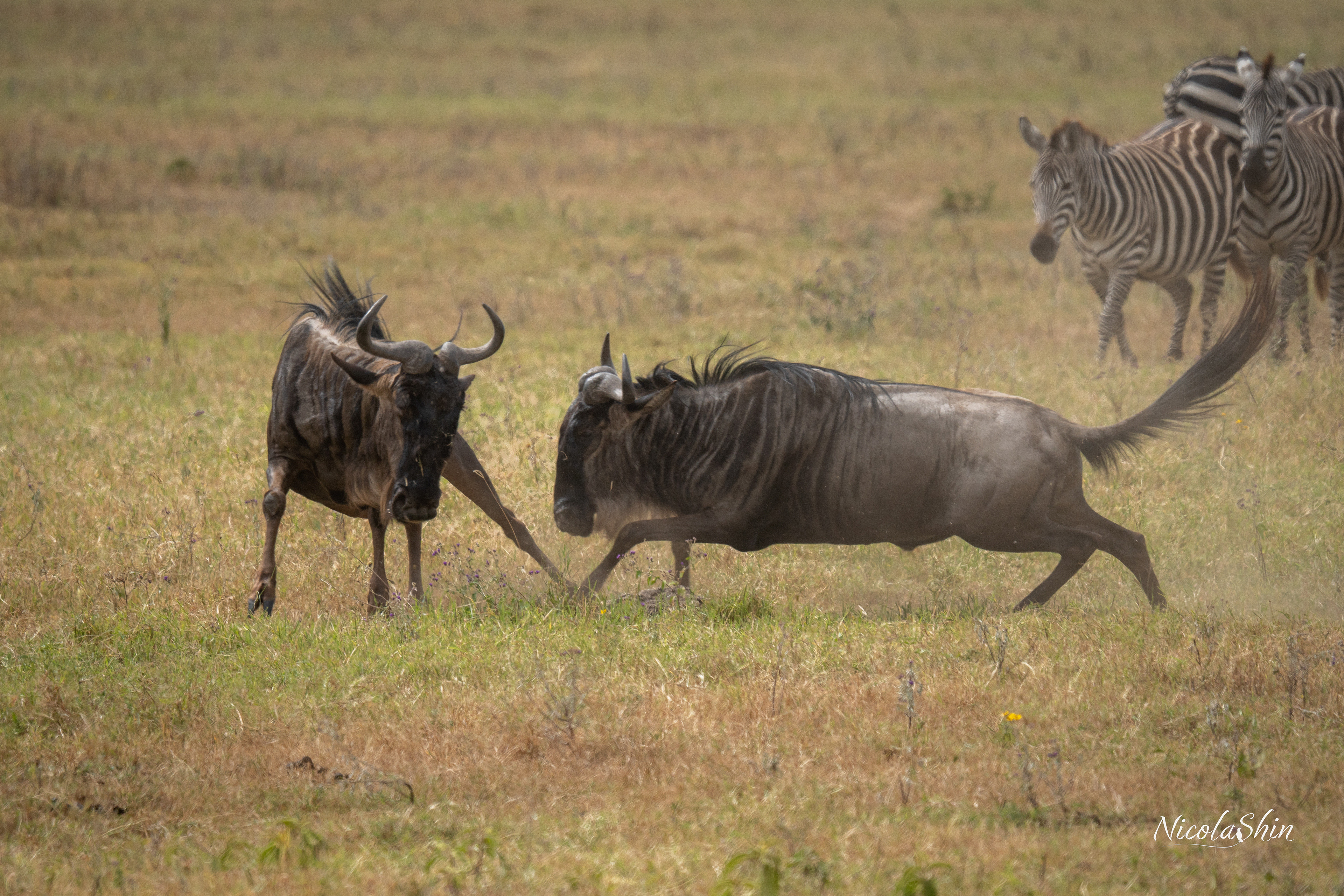

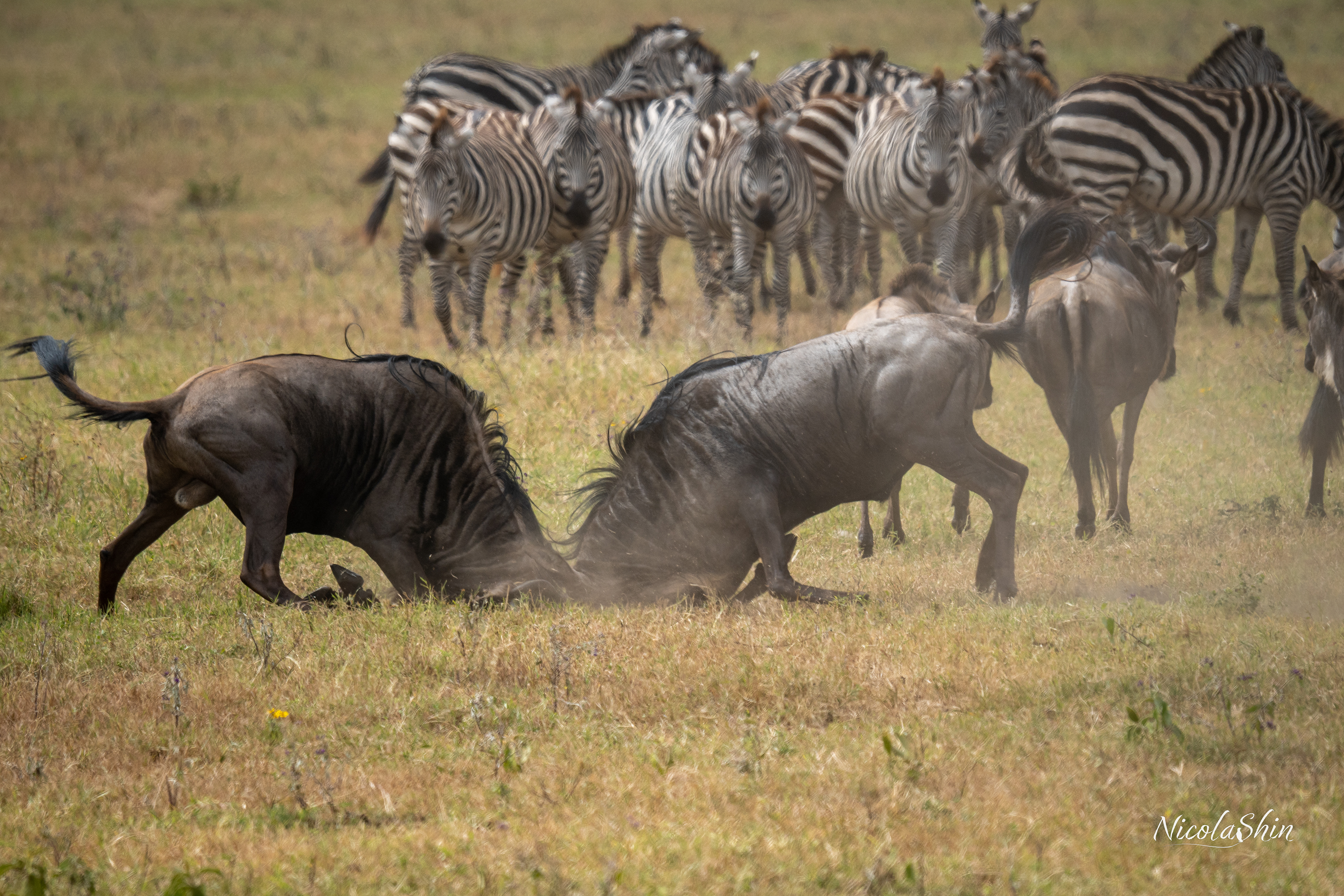
Next: Day 6: Tarangire
